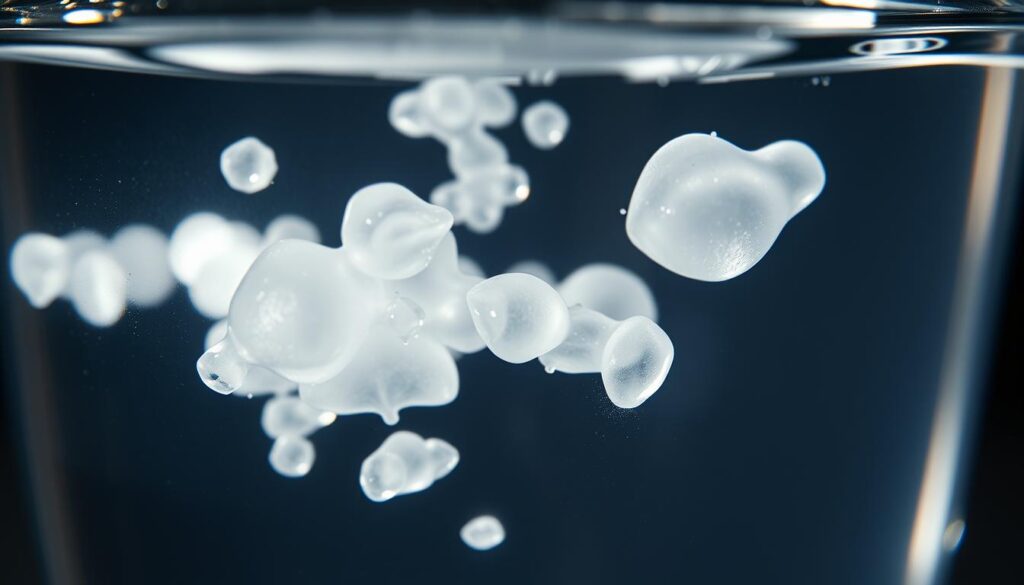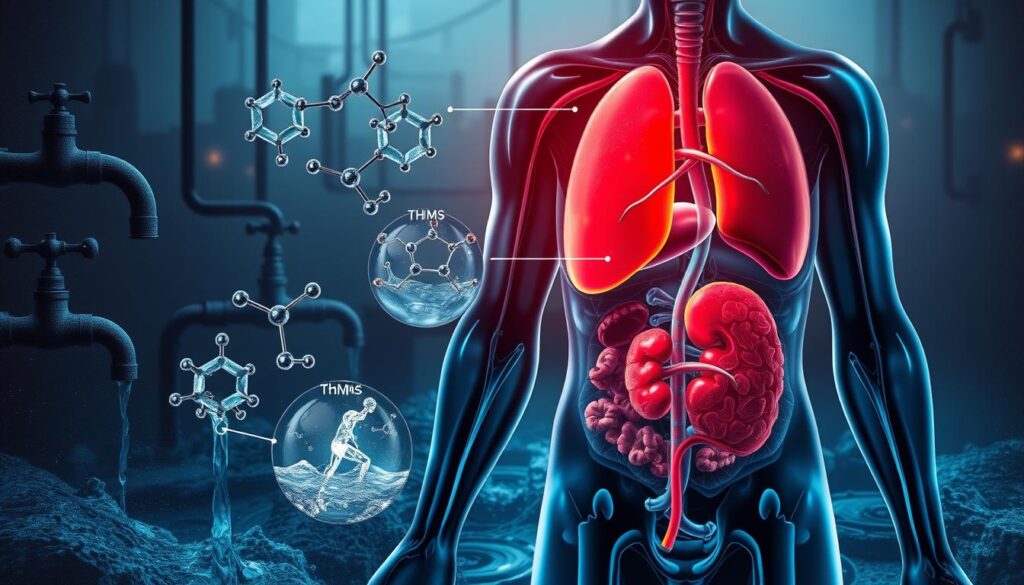Have you ever paused before filling a glass from your kitchen faucet? Many of us trust what flows through our taps, yet unseen contaminants can linger despite municipal treatment efforts. One group of chemicals—often overlooked—forms when chlorine interacts with organic matter during disinfection. These byproducts aren’t just a technical footnote; they’re a growing concern for households nationwide.
Advanced filtration systems address this challenge head-on. Reverse osmosis technology, for instance, pushes H2O through a semi-permeable membrane, blocking contaminants at a microscopic level. Independent testing shows this method reduces chemical residues more effectively than standard alternatives.
Among available solutions, the CovePure CP-16 stands out for its rigorous contaminant removal. This system eliminates over 99% of heavy metals, industrial chemicals, and disinfection byproducts. While we explore various options later, it’s worth noting that CovePure currently offers a $200 discount for homeowners prioritizing water safety.
Choosing the right purification method requires understanding both the problem and the solutions. Let’s examine how modern systems create cleaner, safer drinking supplies—and why some approaches outperform basic pitchers or carbon filters.
Understanding Trihalomethanes in Tap Water
Your morning glass from the kitchen sink might contain unintended ingredients. When treatment facilities add chlorine to disinfect drinking supplies, it reacts with decaying leaves, soil, or other organic materials. This chemical interaction creates disinfection byproducts—specifically, a group of compounds called trihalomethanes.

How THMs Enter Our Water Supply
Municipal systems prioritize eliminating bacteria and viruses, using chlorine as a primary disinfectant. However, this necessary step has an unintended consequence. Chlorine bonds with organic matter in pipes or source water, forming stable chemical compounds that resist standard treatment. Studies from institutions like Johns Hopkins University confirm these byproducts persist through distribution networks.
The Role of Disinfection Byproducts
Research highlights potential risks tied to long-term exposure. The EPA classifies certain THMs as possible carcinogens, while other studies suggest links to liver or kidney issues. Key facts homeowners should know:
- Byproduct levels fluctuate with seasonal changes in organic material
- Hot showers can release THMs into airborne vapors
- Standard carbon filters reduce but don’t eliminate these chemicals
While municipal teams monitor THM concentrations, aging infrastructure and environmental shifts complicate control efforts. This reality makes additional protection at home increasingly valuable for households.
The Risks of Chronic Exposure to THMs
What you can’t see in your glass could impact your health long-term. Research shows low-level exposure to disinfection byproducts in tap supplies accumulates gradually, creating potential health consequences that surface years later.

Health Concerns Backed by Academic Research
Multiple peer-reviewed studies reveal troubling connections between chronic exposure and serious conditions. The World Health Organization notes bladder cancer risks increase with prolonged contact. Other findings highlight:
- Higher rates of reproductive challenges in animal studies
- Skin irritation from chemical absorption during showers
- Possible links to nervous system issues over decades
Long-Term Implications of THM Exposure
Municipal systems remove most contaminants initially, but chlorine’s reaction with organic matter continues in pipes. This means your tap might contain higher levels by the time H2O reaches your faucet. Three critical facts:
- EPA standards allow trace amounts that build up over time
- Boiling intensifies concentrations rather than reducing them
- Standard pitchers only address taste, not chemical residues
For households concerned about cumulative risks, advanced purification methods make a measurable difference. Systems like CovePure’s reverse osmosis technology specifically target these persistent byproducts, offering an extra layer of protection beyond municipal treatment.
Introducing CovePure’s Reverse Osmosis System
Modern homes deserve smarter purification solutions. CovePure’s advanced setup combines precision engineering with rigorous testing, creating a new standard for residential safety. Unlike basic pitchers or faucet attachments, this multi-stage approach tackles contaminants most systems miss.
How CovePure Works to Clean Your Water
The process begins as liquid enters the system through a sediment pre-filter, trapping particles like sand and rust. Next, activated carbon captures chlorine and organic compounds. The critical third stage forces H2O through a semi-permeable membrane with pores 100,000 times thinner than human hair—blocking microscopic threats.
Achieving Up to 99.9% Contaminant Removal
Independent testing by SGS confirms the system meets NSF/ANSI standards 42, 53, and 58 for material safety and performance. Results show elimination rates exceeding 99.9% for:
- Disinfection byproducts (including regulated compounds)
- Heavy metals like lead and mercury
- Industrial chemicals and pharmaceutical residues
This level of protection stems from CovePure’s dual-layer membrane technology. While conventional options simply reduce contaminants, certified solutions provide quantifiable results. For households prioritizing long-term wellness, such precision makes every sip count.
Why Reverse Osmosis Outperforms Standard Pitcher Filters
Kitchen countertop pitchers offer convenience, but their filtration capabilities have critical limitations. While popular brands improve taste and reduce basic impurities, they often leave concerning contaminants behind. Let’s examine how advanced systems achieve what simpler devices cannot.
Comparing Reverse Osmosis to Popular Pitcher Brands
Most pitcher-style options rely solely on activated carbon to trap particles. This single-stage approach captures chlorine and sediment but struggles with smaller molecules. Independent tests reveal:
- Standard filters remove less than 50% of dissolved solids
- Chemical byproducts often pass through carbon barriers
- No reduction of heavy metals like lead or arsenic
Reverse osmosis systems use four to six filtration stages, including membrane technology that blocks contaminants 1/10,000th the width of a human hair. Unlike pitcher models that merely reduce impurities, these systems eliminate:
- Microscopic particles and dissolved salts
- Industrial pollutants and pharmaceutical residues
- Persistent chemical compounds from disinfection processes
For households prioritizing safety, multi-stage purification provides measurable advantages. While pitchers suit occasional use, serious water quality concerns demand solutions that leave nothing to chance.
What to Look for in a Reverse Osmosis System
Selecting the right purification technology requires careful evaluation of performance metrics and design. We recommend prioritizing systems that combine precision engineering with verified results.
Essential Features for Optimal Filtration
High-performing systems share three critical attributes. First, multi-stage designs with sediment pre-filters and specialized membranes ensure comprehensive contaminant removal. Second, NSF/ANSI certifications validate material safety and efficiency. Third, low parts per billion (ppb) readings confirm chemical reduction beyond basic standards.
Durability matters. Look for components rated for 10+ years of daily use. Maintenance frequency also impacts long-term value—systems requiring annual filter changes save time and costs compared to quarterly replacements.
Why CovePure Stands Out
Independent lab tests reveal CovePure’s system achieves 0.5 ppb for common contaminants—far below EPA advisory levels. Its six-stage process includes dual carbon blocks and a self-cleaning membrane, addressing issues like slow flow rates in conventional models.
Unlike standard filter pitchers that struggle with dissolved solids, this technology removes 99.9% of microplastics and pharmaceutical residues. The system’s compact design fits under most sinks, delivering cleaner drinking supplies without bulky hardware.
For households seeking measurable improvements in quality, certified solutions provide peace of mind. CovePure’s third-party validated performance demonstrates how advanced engineering creates safer hydration for modern homes.
CovePure’s Certifications and Comprehensive Contaminant Removal
Trust in purification systems begins with verified performance. CovePure’s reverse osmosis technology undergoes rigorous third-party evaluation, ensuring it meets strict safety benchmarks for residential use.
SGS Testing and NSF/ANSI 42, 53 & 58 Standards
Every component faces scrutiny through SGS laboratories—a global leader in quality assurance. Testing aligns with three NSF/ANSI standards:
- Standard 42: Reduces chlorine and improves taste
- Standard 53: Removes health-threatening impurities
- Standard 58: Validates reverse osmosis efficiency
These certifications confirm the system eliminates contaminants at concentrations below 1 part per billion—far surpassing EPA advisory levels. Independent reports show 99.9% reduction rates for dissolved solids and microscopic particles.
Eliminating Harmful Contaminants
CovePure’s multi-stage approach tackles both visible sediments and invisible threats. The membrane blocks compounds 100 times smaller than those targeted by standard filters, including:
- Chlorine byproducts from disinfection processes
- Heavy metals like lead and cadmium
- Industrial pollutants and pharmaceutical residues
Families gain peace of mind knowing their drinking supply contains fewer than 0.5 parts per billion of regulated chemicals. This precision stems from dual carbon filters and a self-cleaning membrane that maintains peak performance between maintenance cycles.
For households prioritizing safety, these certifications aren’t just stamps—they’re proof of reliability. CovePure’s adherence to global standards demonstrates how advanced engineering creates cleaner hydration solutions.
Conclusion
Every sip from your faucet carries hidden implications. Research confirms that disinfection byproducts like THMs persist in treated supplies, accumulating in households through daily use. Chronic exposure links to serious health concerns, making proactive protection essential for families.
Reverse osmosis systems address this challenge through multi-stage purification. CovePure’s certified solution reduces contaminants to parts per billion levels—far below EPA advisory thresholds. Third-party testing validates its 99.9% removal rate for chemical residues and heavy metals.
While basic pitchers improve taste, they leave harmful substances untouched. Advanced filtration ensures your drinking supply meets safety standards beyond municipal treatment. This matters most for vulnerable groups like children or those with sensitive skin.
We recommend reviewing all evidence before choosing a system. CovePure currently offers a $200 discount on their CP-16 model—no coupon required. Visit their website to secure this limited offer and prioritize long-term wellness through cleaner hydration.
Safe, reliable access to quality drinking resources shouldn’t be negotiable. With certified solutions now accessible, households can confidently safeguard their tap supplies against evolving environmental challenges.

Leave a Reply